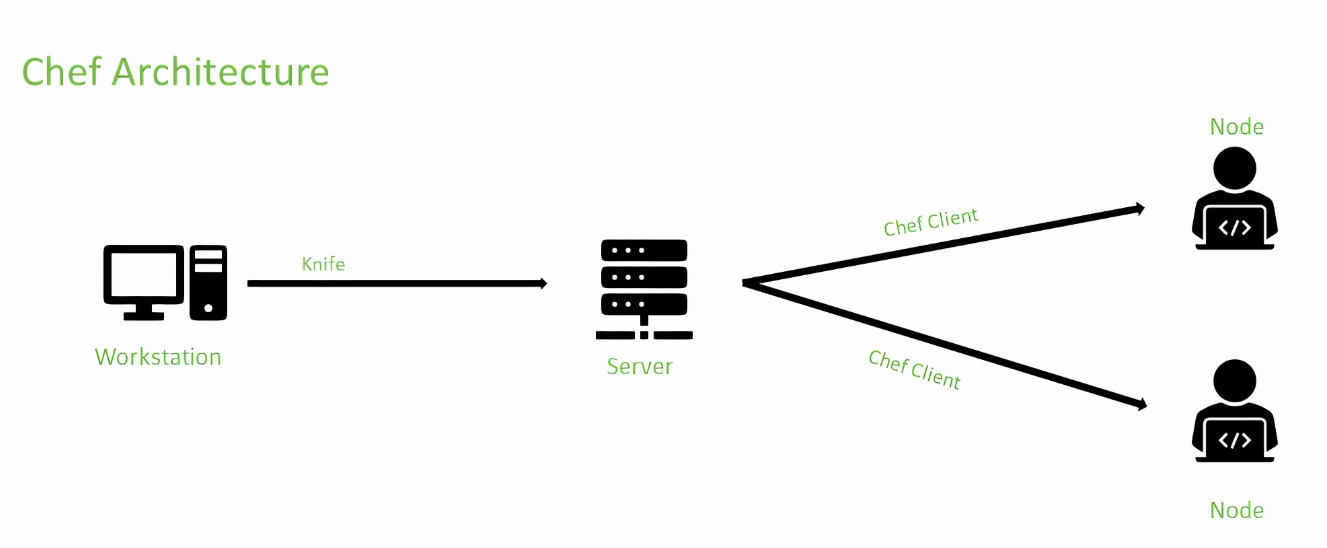Automation using Chef
Last Updated :
05 Jun, 2020
Chef is a configuration management technology developed by Opscode to manage infrastructure on physical or virtual machines. It is an open source tool developed using Ruby and Erlang. As we are living in a robust world where there are new features coming everyday and we need proper mechanisms to manage the rapid pace of development.
Chef Architecture :

Component of Chef Architecture :
Chef has major components such as Workstation, Cookbook, Node, and Chef-Server. Let us see the entire major component in detail.
- Workstation –
The workstation is used to interact with Chef-server and Chef-nodes. It is also used to create Cookbooks. Workstation is a place where all the interaction takes place, where Cookbooks are created, tested and deployed, and in workstation, codes are tested. Workstation is also used for defining roles and environments based on the development and production environment.
Knife is used for interacting with Chef Nodes.
- Chef Server –
Chef server contains all configuration data, it also stores cookbooks, recipes and metadata that describe each node in the Chef-Client. Configuration details are given to node through Chef-Client. Any changes made must pass through the Chef server to be deployed. Prior to pushing the changes, it verifies that the nodes and workstation are paired with the server through the use of authorization keys, and then allow for communication between workstations and nodes.
- Node –
Nodes are managed by Chef and each node is configured by installing Chef-Client on it. Chef-Nodes are a machine such as physical, virtual cloud etc.
- Cookbooks –
Cookbooks are created using Ruby language and Domain Specific languages are used for specific resources. A cookbook contains recipes which specify resources to be used and in which order it is to be used. The cookbook contains all the details regarding the work and it changes the configuration of the Chef-Node.
Advantages of Using Chef :
- Continuous Deployment –
Software is deployed continuously enabling the company to keep in pace with market requirements and the changing dynamics of user behavior towards a particular product. We constantly need to innovate to live in the competitive software industry and we need a tool set that helps us in rapid continuous deployment.
- Increase System Robustness –
As there are lots of servers for an organisation, Big tech giants not only have very large server farms but also they need to keep redundant servers to manage few server failures that don’t cripple the whole institution, So we need infrastructure automation that ensures all bugs are caught and removed before the deployment of the software.
- Adaption to the cloud –
Chef easily integrates with infrastructure on the cloud for one shot automation. It easily integrates with major cloud service provider such as Amazon Web Service(AWS) and GCP.
- Managing Data Centers and Cloud Environments –
It is used by big tech companies to manage their cloud infrastructure, under chef we can manage all your cloud and on-premise platforms including servers.
Disadvantages of Chef :
- One of the huge disadvantages of Chef is the way cookbooks are controlled. It needs constant babying so that people who are working should not mess up with others cookbooks.
- It is not very easy to learn if the person is not familiar with Ruby.
- Good Documentation is still lacking.
Share your thoughts in the comments
Please Login to comment...